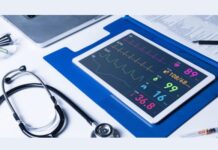The world medical devices market was valued at $455.50 billion in 2022 and is anticipated to reach $756.59 billion by the year 2031. It is currently increasing at a CAGR of 5.8% in the forecast period (2024-2031). The growing market is a testament to the fact that medical facilities in the modern world integrate a data-driven approach to enhance patient care, resolve customer queries, improve treatment, and streamline hospital workflow.
In modern times, the healthcare industry is moving toward a new era, where software, cloud computing, and medical applications have become vital to the development and function of medical devices. From diagnostic devices to therapeutic tools, the future of medical technology is being written in code. In fact, technology and medical devices have converged to revolutionise the implementation of healthcare solutions. In relevance to this, let us further understand the role of the latest technological trends, innovations and compliant medical software devices and applications in the medical industry.
Understanding Software for Medical Devices
Medical device software (MDSW) is a program designed specifically to execute medical operations without being dependent on hardware devices. It plays a critical role in healthcare and covers an array of applications such as diagnostics, patient monitoring, and treatment. From insulin pumps to surgical robots, it is used in a wide range of medical devices. Along with this, it significantly helps in enhancing the quality, safety, and effectiveness of healthcare.
Types of Medical Device Software
There are primarily two types of software for medical devices: Embedded Medical Systems and Software as a Medical Device (SaMD). Both of them have a crucial role to play in health care.
Embedded Medical Systems
The embedded medical system software, or EMSSW, is software that is typically integrated into a medical device and controls its functions. It is devised with safety in mind and is generally used in insulin pumps, pacemakers, and imaging systems. It is embedded within the hardware and is coupled with the devices to control the functionality. For instance, EMSSW software is used in MRI machines to help oversee their functioning. It manages different machine procedures, aids in data acquisition, and synchronises with its scanning sequences to develop patient images.
Software as a Medical Device (SaMD)
Software as a Medical Device differs from embedded systems, as it works independently on any hardware medical device. It operates as standalone software with a designated medical purpose. SaMD software types include mobile and desktop applications and cloud-based software. Examples of this include mobile applications used for analysing blood glucose levels in diabetic patients. It helps patients monitor their readings, track patterns, and acquire knowledge about maintaining their condition more efficiently.
Software Testing
Testing the software is a critical part of the healthcare industry that can make the difference between life and death. It helps give practitioners as well as users peace of mind that the devices and software are in working condition and meet all the regulatory requirements. The devices mainly go through five levels of testing, including planning, design, execution, reporting, and verification.
Cloud Computing
Another revolutionary technology in healthcare is cloud computing. It has brought about a significant shift since its adoption in the industry and has created new avenues for the consumption, creation, storage, and exchange of data. Cloud computing has two facets to its applications. It operates in favour of both healthcare facilities and patients. It enables them to use and store a large amount of data from anywhere and at any time, which aids in improving patient care and streamlines functionalities. It operates by implementing remote servers hosted on the internet to handle, store, and process healthcare data and applications.
Integration of UI/UX Design in Healthcare
Along with medical device software, mobile applications in the healthcare industry also play a critical role in enhancing healthcare services and promoting effective communication between patients and professionals. Healthcare systems are conventionally complex and include intricate workflows that involve patients, staff, and healthcare providers. A simplified UI/UX design can provide resolution to these issues, and offer a seamless and intuitive user experience. For instance, patients can easily access information, avail of medical services, and schedule appointments.
Data Security in Healthcare Systems
The advancement of healthcare software development has opened many doors to potential data breaches, leading to sensitive patients’ data disclosure. This is why it becomes critical for healthcare facilities to protect patient’s sensitive information and prevent such breaches from taking place. Medical facilities need to employ measures such as two-factor authentication, biometrics, PIN codes, etc. for data security. Other than this, it is the responsibility of medical facilities to ensure that the applications they are using comply with HIPAA, GDPR, and Data Protection Act guidelines.
In conclusion, the healthcare industry is weaving a successful narrative with rapid innovations and precision software developments. From incorporating cutting-edge technologies such as cloud computing to software as a medical device, the medical sector is delivering relentless innovations, safe patient care practices, and compliant software solutions to enhance patient treatment. The future of the medical device industry holds great potential for advanced solutions to redefine healthcare delivery and contribute to the overall success of the medical industry.

















